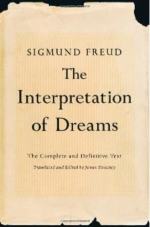|
This section contains 1,355 words (approx. 4 pages at 400 words per page) |

|
Chapter 1, Part 2 Summary
To start, Freud presents the odd logic of human regard for dreams, noting that if dreams are a part of our psyche, then it is seemingly contradictory that we regard those very dreams as foreign or alien to us, as if our own brain was not responsible for creating this strange thing in the first place. This strangeness could be because, as Freud citing Schleiermacher's theory states, while we are awake, we experience brain activity through ideas, and while we are dreaming, we experience through visual and auditory imagery. Dreams "think," he says, mostly in images. So it follows that the primary characteristic of dreams are those that "behave like" images, which he maintains are, in turn, more like perceptions than memory devices.
Then, besides the dream transforming the [waking] idea into an [dreaming] hallucination, the dream then presents the hallucination...
(read more from the Chapter 1, Part 2 Summary)
|
This section contains 1,355 words (approx. 4 pages at 400 words per page) |

|




